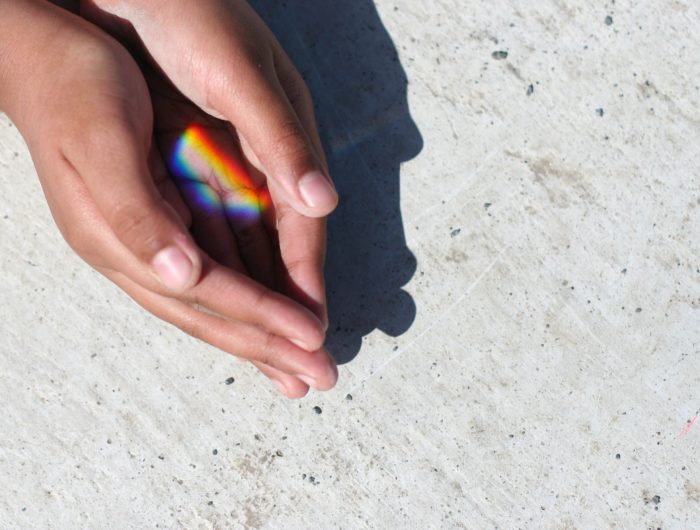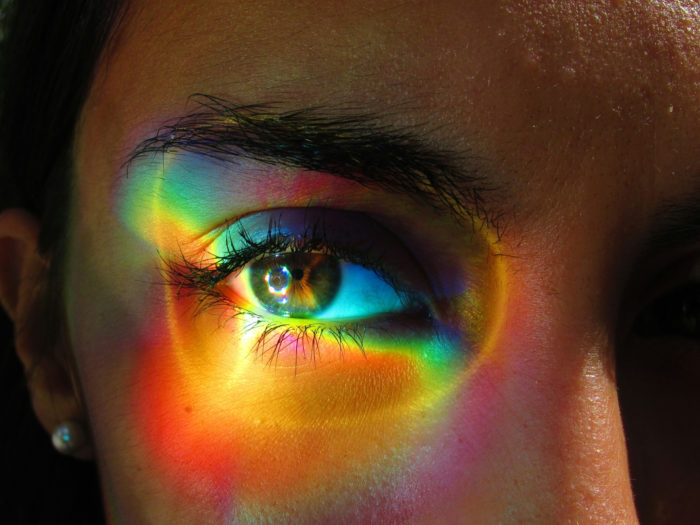How To Raise A Rainbow Child – Embrace Rainbow Energy
If you want to know how to raise a Rainbow Child, then you are not alone. This unique group of Star Children is notoriously challenging to parents because of their unique and evolving needs.
However, because they carry the gift of the full spectrum of Rainbow Energy, it makes them a joy to be around when things are going well.
They have limitless potential for healing and doing good in the world as long as they can overcome their own challenges.
Parenting advice specific to those raising Rainbow Children is sparse at best.
They are far and few between because they have only been incarnating since the year 2000 and have only started arriving in any significant number since 2010.
As a result, there is a lack of experienced parents offering their advice on the topic.
Luckily, over the past few years, there has been more and more advice available to those on this path.
We have collected the best of it so that you can benefit from others’ experience and give your Rainbow Child the best possible start in life.
Nurturing Your Rainbow Child’s Unique Energy
Rainbow Children are high-energy beings, perhaps more so than any of the Star Children that came before them.
The intense vibration of their energy presents opportunities and challenges that you, as their parent, should be prepared to embrace, rather than dread.
The first big challenge you will come up against is related to the speed of their development.
While they develop emotionally at a quicker rate than others, developing empathy and intuition earlier than their peers, they can struggle to conform to social norms and may struggle to start speaking.
That does not mean that there is something wrong with them, just that their challenges are different.
Children are fickle, so when presented with someone who acts a little differently, they can react poorly and selfishly.
This misjudgment on their part can, unfortunately, lead to isolation for your child, who may struggle to make and keep friends.
One way of tackling this is to find other Rainbows for them to build their social skills. Use social media and engage with teachers and other parents to befriend other children like yours.
It should be said that this is only part of the solution. While making virtual friends fixes the isolation in the short term.
But in the long run, these multi-faceted beings that vibrate the full spectrum of energy need to develop ways to relate with others that do not share this energy.
This is a vital life skill and one that other parents might not need to spend as much time thinking about.
Be Patient When They Are Struggling
Most Rainbows are born to Crystal parents, so there is a natural bond borne from the similarities between all Star Children.
This means that you are likely to be already empathetic and, therefore, quite patient with them.
However, the unique challenges that your family goes through can eat away at that patience – after all, you are only human.
The worst thing you can do is lose your patience and take out your frustration on your child.
They are very sensitive to the emotions of others and will understand how you feel more than you think, which can be damaging if you allow yourself to fall to negative emotion.
Provide Outlets For Their High-Energy Behaviours
Rainbows are notoriously hyperactive, always buzzing with energy, and rarely sitting still for long. Being so full-on can cause them to get a reputation as being one of the “naughty” ones, but that is entirely unfair.
If the Rainbow Child becomes too hyperactive, it is because they have not had the opportunity to get all of the pent up energy out of their system.
Your job is to provide ways for them to safely and productively get that energy out.
How exactly you do that will be up to you and your best judgment, based on the unique needs of your family.
For some, the answer is to tire them out physically, perhaps through sports and exercise.
For others, it is mental stimulation that works best, providing them with plenty of books, puzzles, and creative materials like crayons, pens, and paints.
For most, there is a balance to be struck between these two approaches.
Tell A Positive Narrative
One major issue that often comes up with Rainbow Children is that they start to realize that they are different from their peers.
Noticing the separation can be damaging if not managed properly. All of us tend to see our differences as weaknesses.
Unfortunately, this is often enforced by “bullies” and the narrow-minded as they fear what they do not understand or admire.
Having this judgment cast on the Rainbow Child can create a negative narrative where they start to believe that they are “less than” other people.
Of course, we all know that this is a mistake. Being different is often a good thing, and this is the kind of narrative Rainbows need to tell themselves.
Self-talk like this begins with their parents teaching them – the people they trust the most!
The trap that some parents fall into is always talking about “problems” and “challenges” when discussing those things.
As adults, we understand that this is not intended to be judgemental, but children are less experienced and tend to read into something the wrong way.
Rather than stressing the differences and the problems, you could instead emphasize the areas in which they are strong!
Rainbows are highly empathic and very tuned in to their creativity, so providing opportunities for them to excel in these areas can help to change the way they see themselves.
It is particularly essential to create the right narrative for a Rainbow Child as they tend to be more internal with their thoughts.
We all know the problems associated with “getting in your own head,” so providing some positive external narrative can do the world of good for the development of their own sense of self.
Parents Know How To Raise A Rainbow Child
At the end of the day, it is important to remember that Rainbow Children choose only those who are prepared for the journey.
Following your intuition will rarely steer you wrong as long as you are thinking clearly and focusing on their future.
That being said, there is help out there for people who are struggling with the sorts of challenges you are coming up against.
Never be afraid to ask for help or advice – there is always someone out there who has been through what you are currently facing.







I have a rainbow child and I need help potty training, pls
I’m right there with you. I’m the grandmother. Mine wants to not wear the diapers/pull ups, but will not tell he needs to potty. I just keep trying to get him to give me a sign that he has to go. He’s 3 yrs 6 months.
Lol,I have one too and the potty training was the worst! I’ll tell you the minute I stopped fussing and trying with her she got on the toilet and did her thing, she is 16, school was the hardest for her if I could do it all over again I would have home schooled her, they will try to push all sorts of IEP classes the minute they try this is the time you need to pull that child from the system, love and hold me tight. All children are beautiful! ❤️ Save the children, unmask the truth ✌🏻
I believe that isolating your child is not the best option.homeschool should be used up until 18 years but you should also expose them to children but it should be fun stuff like dancing and theater arts.being anti social makes it worse but conforming does too.encourage them to be loners and have their own imaginary world of make believe and play with others but do not lose themselves in the process.method acting and stand up comedy can help with the bullying. ….as for the boredom from hyperactivity get them to put on plays or do little dance recitals where they design costumes I do song lyrics about their stress.i hope this helps.